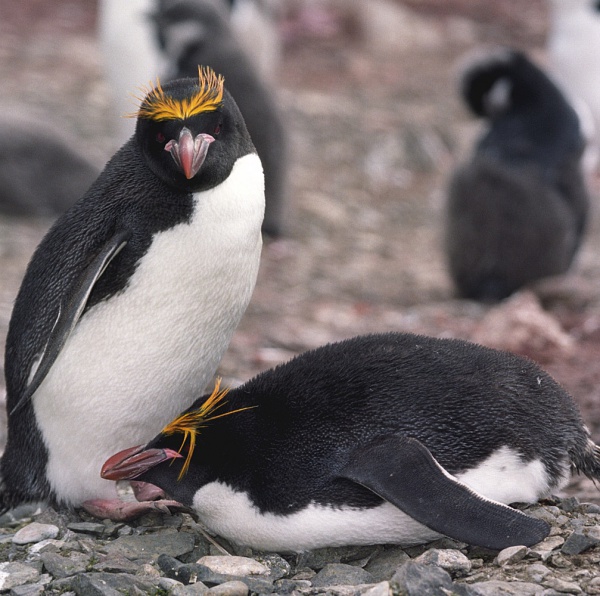Facts About Macaroni penguin
The macaroni penguin is a captivating species inhabiting the Subantarctic to the Antarctic Peninsula. Known for its distinctive yellow crest, this penguin is closely related to the royal penguin. Adults typically weigh around 5.5 kilograms and measure about 70 centimeters in length. Their diet primarily consists of crustaceans, particularly krill, and they form enormous breeding colonies that can number up to 100,000 individuals.
Each year, macaroni penguins undergo a molting process and spend some time on land before returning to the sea. These flightless birds have bodies ideally adapted for life in the water. Belonging to the genus Eudyptes, which includes six species known as crested penguins, macaroni penguins diverged from their royal penguin relatives approximately 1.5 million years ago. Their name, inspired by the term "Maccaronism" reflects their distinctive yellow crest.
Regrettably, macaroni penguins are classified as vulnerable due to significant population declines since the mid-1970s. They have a varied diet that includes crustaceans, squid, and fish, making them critical consumers of marine resources, particularly krill. However, they also face threats from natural predators like birds and aquatic mammals.
Breeding colonies of macaroni penguins are among the largest and most densely populated, with extensive social interactions. These penguins engage in a variety of visual and vocal displays, especially during the courtship and breeding seasons.
Conservation efforts are underway to monitor and protect macaroni penguin populations. Long-term monitoring programs at breeding colonies and the designation of certain habitats as protected reserves are part of these efforts. Nevertheless, the species still faces threats from commercial fishing, marine pollution, and the impact of climate change on krill populations. Due to these ongoing challenges, the macaroni penguin is listed as globally vulnerable by the IUCN Red List.
